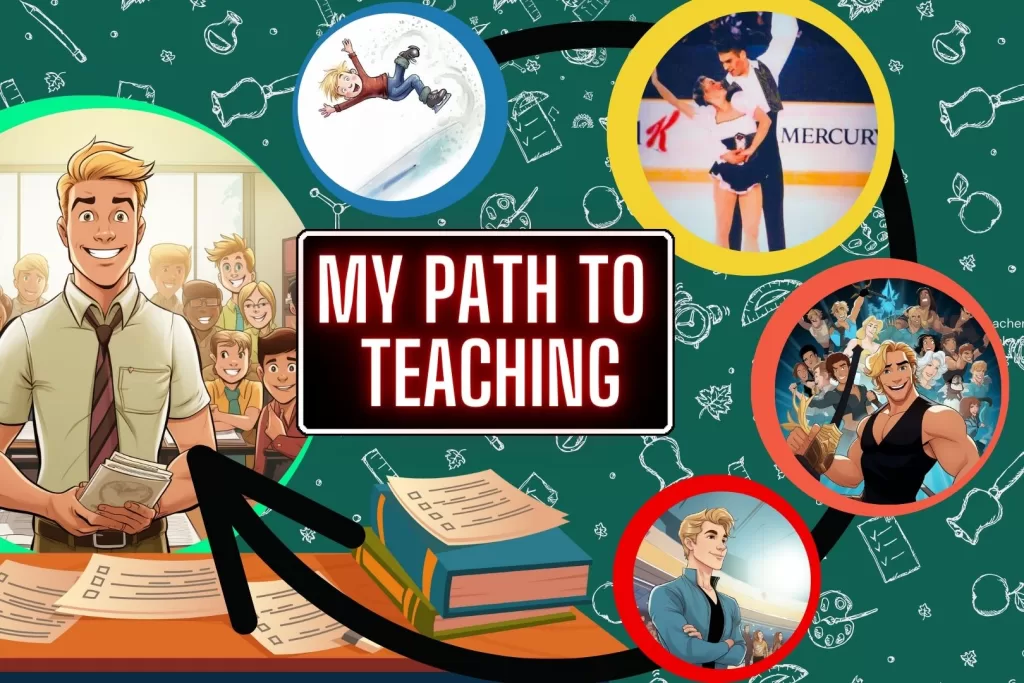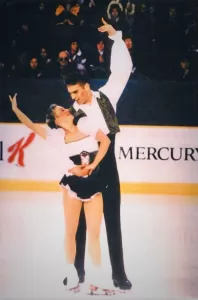Skates, Stages, and Schoolbooks: Discover Unique Teaching Strategies to Engage and Inspire Your Students
“Through my unique journey to teaching, which led me from icy rinks to iconic stages like Madison Square Garden in New York City and the Bulls Stadium in Chicago, I uncovered the teaching strategies I now implement daily in my classroom. Performing to packed audiences of over 20,000 at venues worldwide, it’s surprising yet true that many of the strategies I rely on were shaped on those very ice surfaces.”

Lessons from the Ice
As a nationally ranked athlete, I internalized values like discipline, perseverance, and sheer determination to overcome challenges. Every fall I took on the ice taught me that setbacks
are stepping stones to greater heights. Without those falls, the mastered triple jump would remain a distant dream. The importance of resilience is a lesson from my skating days that remains with me to this day: when you fall, and you will…often…, always get up off of your butt, try again, and do it with a smile.

Spotlights and Storytelling with Disney on Ice
Then came the spotlight with Disney on Ice, playing the delightfully wicked Hades in “Hercules on Ice.” Here, I discovered the power of storytelling and how a compelling narrative could captivate and inspire an audience. It wasn’t just about the moves; it was about connecting emotionally, making every performance memorable.
Coaching: Shaping Dreams and Discovering Mentorship
Coaching was the next chapter, and perhaps the most transformative. Guiding young talents toward their dreams, I realized the profound impact a mentor could have. Celebrating their victories and navigating challenges, I learned the importance of adaptability, patience, and the art of effective feedback. The joy of seeing my athletes clinch a national gold medal was a testament to the magic of collaboration and shared goals.
The Classroom: Where Past Lessons Shape Present Approaches
When I transitioned to teaching, I didn’t leave these lessons behind. Instead, they became the foundation of my approach. The discipline of an athlete shaped my classroom’s structure, the storytelling skills of a performer made my lessons engaging, and the mentorship skills of a coach influenced how I interacted with each student, recognizing their unique potential.
A Life on Skates: Influencing Classroom Strategies
Drawing from the countless hours spent on the ice, I’ve realized that the classroom, much like the rink, requires a blend of discipline, adaptability, and creativity. Here’s how my life on skates has directly influenced my classroom strategies:
Create a Positive Learning Environment:
Just as the ice rink was my sanctuary, the classroom should be a safe haven for students. The camaraderie among skaters taught me the importance of mutual respect, trust, and open communication. In the classroom, this translates to an environment where every student feels valued and heard.
Establish Clear Expectations and Guidelines for Behavior:
On the ice, every move has a purpose, and every routine has a rhythm. Similarly, in the classroom, setting clear expectations helps students understand their role and the rhythm of the learning process.
Encourage Active Participation and Inclusivity:
Just as figure skating is a blend of individual performance and team synchronization, students should be encouraged to shine individually while also working harmoniously in groups.
Create Opportunities for Students to Share Their Thoughts and Ideas:
The ice was my canvas, where I expressed my emotions and stories. Similarly, students should have platforms to share their narratives, ideas, and feelings.
Encourage Healthy Habits
Drawing parallels from my skating days, maintaining physical and mental well-being is paramount. Here’s how I integrate the discipline of an athlete into promoting healthy habits:

The Importance of a Balanced Diet:
Just as an athlete’s diet fuels performance, students need proper nutrition to fuel their learning. Discussing the benefits of nutrition and making healthier food choices can be likened to the regimen I followed as a skater.
Encourage Adequate Sleep:
Rest was crucial before any big performance or competition. Similarly, students need adequate sleep to ensure they’re alert, focused, and ready to learn.
Promote Regular Physical Activity:
The countless hours of practice on the rink underscored the importance of physical activity. Encouraging students to be active can help them achieve balance, much like the balance required in figure skating.
Integrate Stress Management Techniques:
The pressure before a performance was immense. Techniques like deep breathing and visualization helped me on the ice, and they can assist students in managing classroom pressures.
The Wrap-Up
The journey from icy rinks to the classroom has been enlightening. The discipline of figure skating, the resilience I learned about after every fall, and the pursuit of perfection have all shaped the teaching strategies that I use every day in my classroom. As educators, our goal is to ensure that our students are equipped with the right skills and mindset to face challenges head-on. Drawing from my experiences on the ice, I strive to instill in my students the same passion, dedication, and resilience that skating taught me. Let’s lace up our skates and glide into a brighter future for our students!

